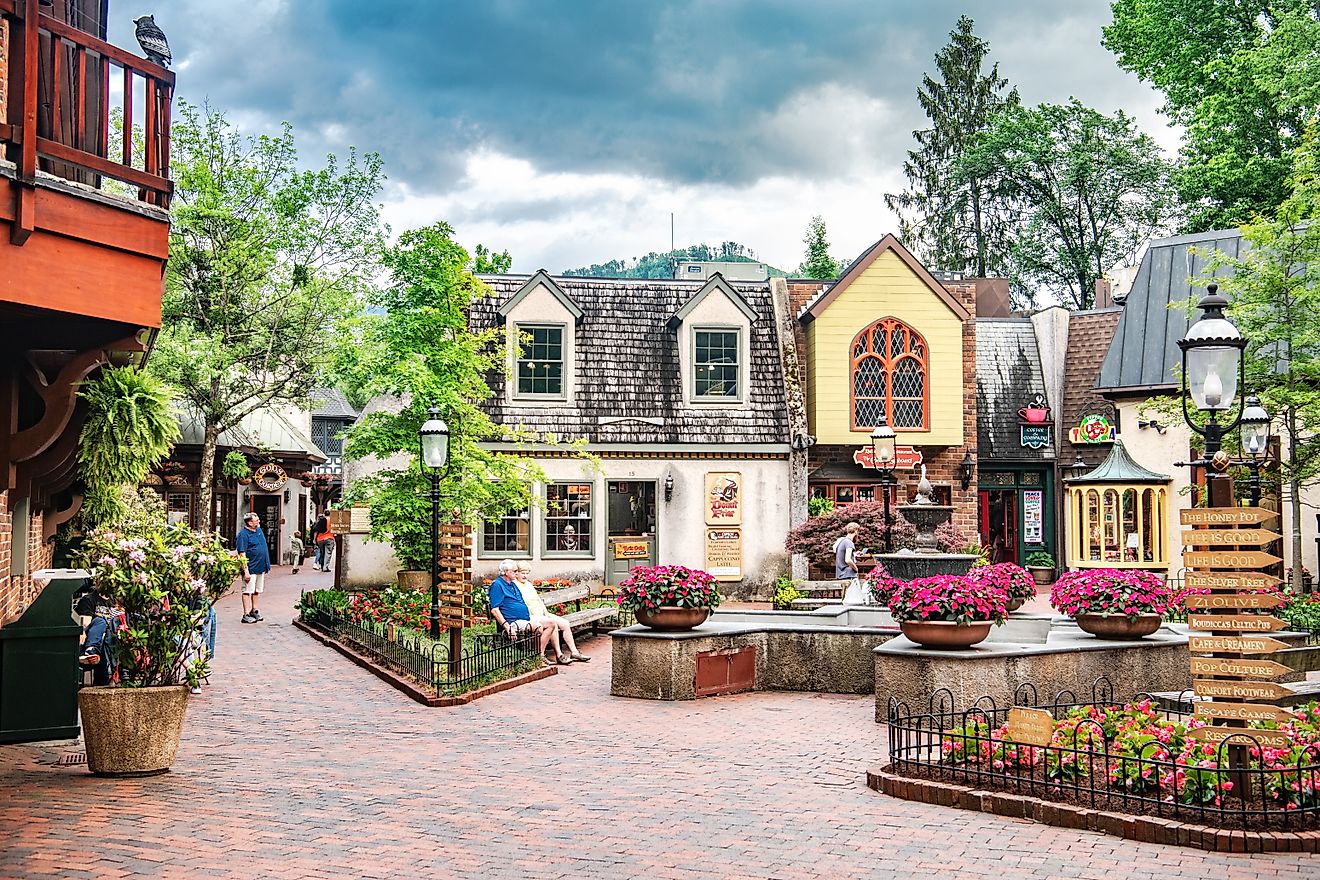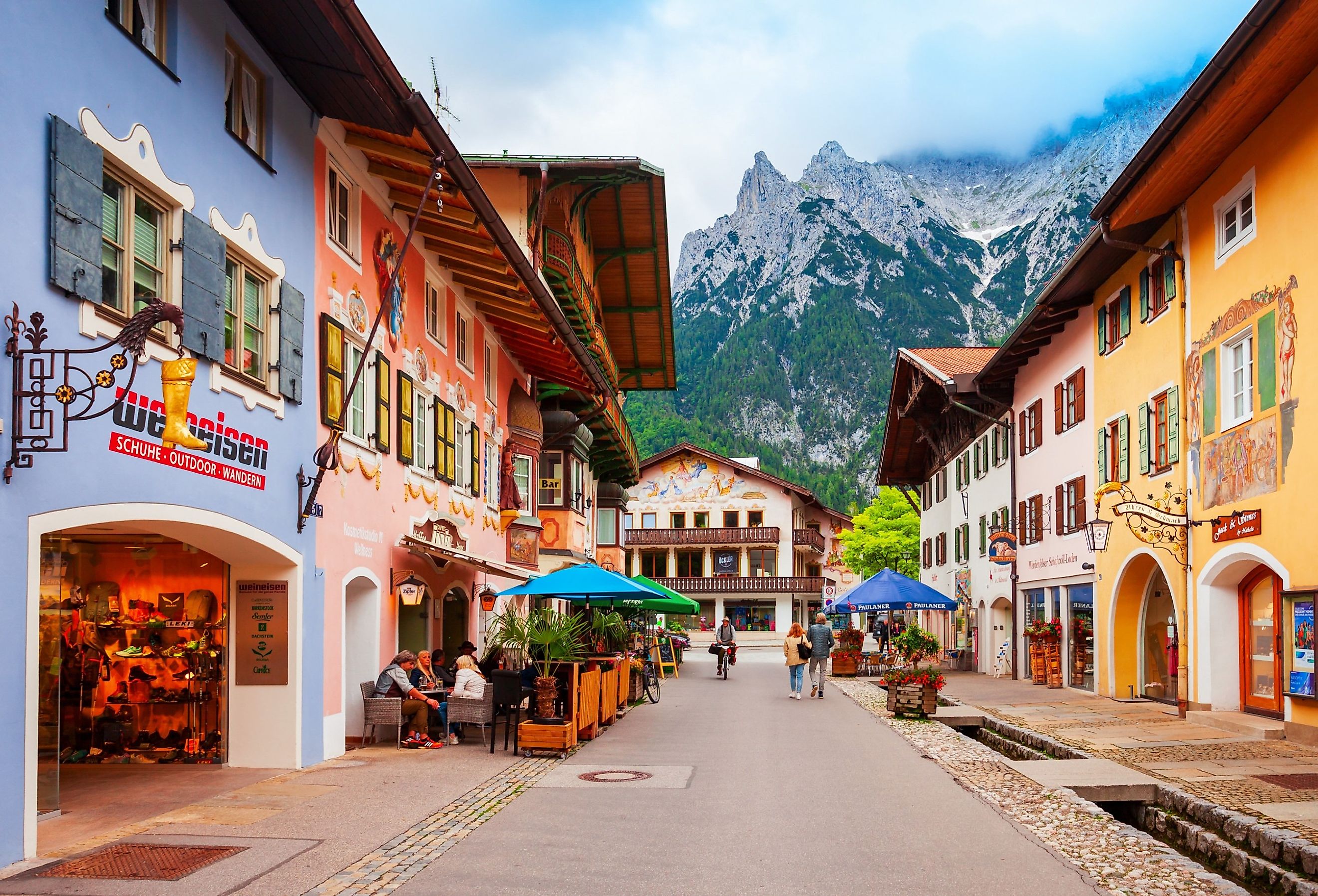
7 Welcoming Towns to Retire in Germany
Known as Deutschland and the Father Land by many, this relatively modern country was founded on land spanning thousands of years of history and inhabitation. Kingdoms have both risen and fallen—empires have thrived and crumbled—but what remains constant is Germany's famed beauty. Whether that is its rolling green hills of Hochsauerlandkreis or the deep green forests in Bavaria, the towns of Germany surrounded by its impeccable beauty continue to draw many to this day. Germany is the perfect place to quietly settle down, and it is home to the most welcoming towns to retire.
Burg auf Fehmarn
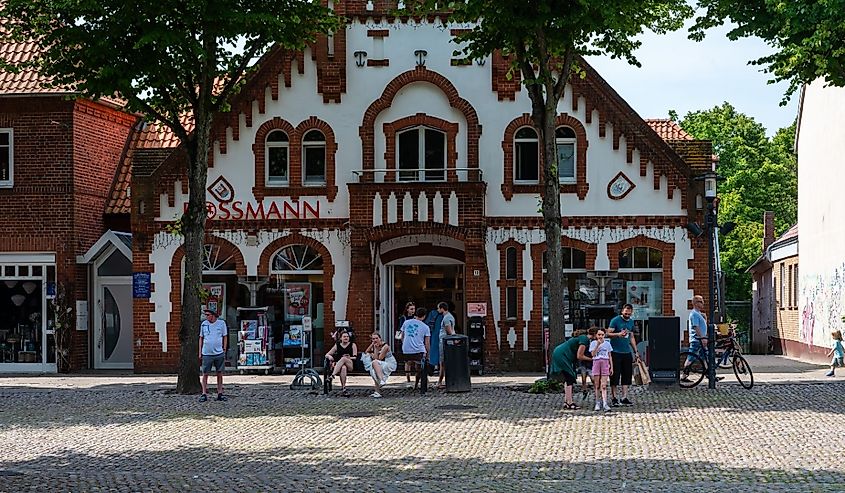
On a small island halfway between the German mainland and Denmark, Burg auf Fehmarn sits cozily as a perfectly preserved town filled with ancient architecture, fields of flowers, and plenty of sunshine. Though Burg auf Fehmarn, being the largest town on this tiny island, has only about 6,000 inhabitants from a 2021 estimate, there is no doubt that you will appreciate its surreal beauty.
Burg auf Fehmarn houses a variety of activities and entertainment, one of which is a well-known indoor zoo known as Schmetterlingspark Fehmarn, a local hotspot and comfortable small space—filled with plenty of butterflies and a collection of reptiles that make for a calming experience. The indoor zoo is also a perfect representative of the museum town Burg has already become. The Galileo-Wissenswelt Fehmarn, coupled with the eccentricities of Brandung near the shores, and this community is never a place that fosters boredom but a slow and meaningful living.
Yet what makes Burg auf Fehmarn a great place to retire specifically? Burg simply is a well-rounder: it has a hospital in town (AMEOS Klinikum Fehmarn), a moderate to moderately high range of rent expenses (3,000~ euros a month), with all the scenic views of the Baltic Sea in between.
Mittenwald
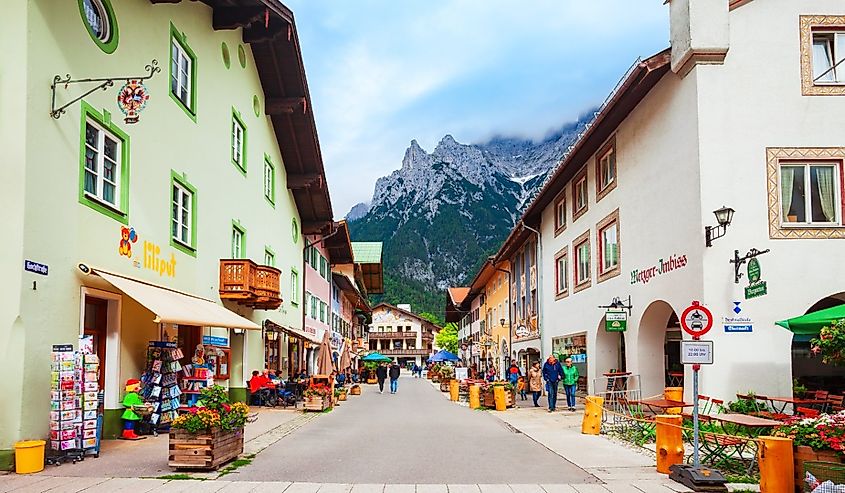
In the Bavarian wilderness, amidst the Alpine peaks of snow and green valleys below, sits Mittenwald, a town known for its striking views of the mountains—and for creating some of the best musical instruments in the world. Home of the once prestigious and generally considered best instrument-making families in all of Europe, the Klotz family, Mittenwald takes Klotz as part of its Bavarian tradition and atmosphere and thus has now become a beacon in the music world, nearly becoming a sacred site for musicians of every flavor.
Mittenwald is not a one-trick pony either; its surrounding area's beauty has enough scenic views for a lifetime. The canyon of Leutaschklamm, for instance, provides a wonderful hike through the mountains and woods, all while the snow-capped peaks of the Alpines loom in the distance. For Mittenwald specifically, its old town is populated with numerous buildings from a bygone era, still in use, with often family-owned businesses and museums on every corner. A notable museum dedicated to Mittenwald's music past is the Geigenbaumuseum, a wonderful place dedicated to the art of wood instrument-making.
Mittenwald is a highly desirable place, but to retire there in the mountains along with its other 8,000 residents is still feasible, albeit for a pretty penny. According to rentberry.com, the average rent for Mittenwald is nearly 6,000 euros. Bavaria itself is one of the most expensive regions in the entire country—but what is the price of Mittenwald? For its culture and scenery, it's invaluable.
Rottach-Egern
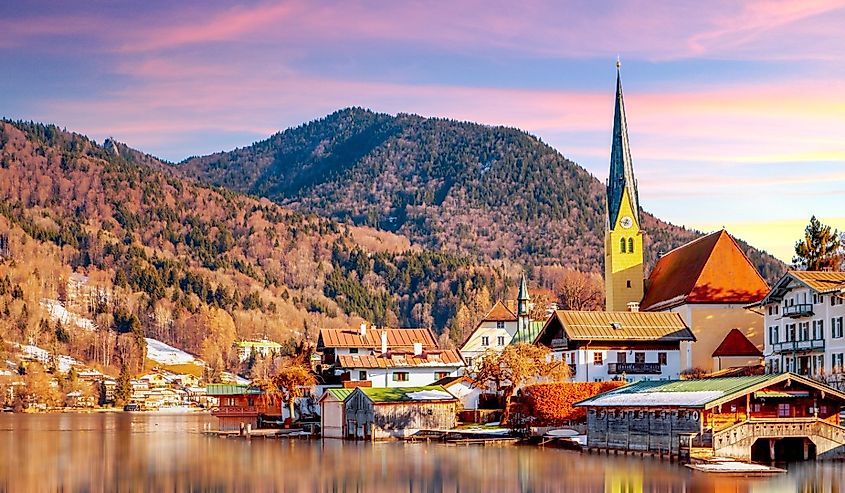
South and by the shores of the dark blue lake, Tegernsee, rests Rottach-Egern, a town that looks straight out of a fairytale. Situated at the bottom of a basket valley, many hikers, locals, and tourists alike take the trolley leading to Mount Wallberg and bask at its high-mountain views with fields, clifffaces, and forested paths below—all the way down to the Rottach Waterfall. The nearby lake provides many opportunities to also sunbathe and enjoy the cold water.
Not many towns have the diverse biomes that Rottach-Egern does, and the appeal to this lakeside community at the foot of a mountain has attracted a variety of wealthy families and individuals looking for a quiet place to pass the time. It's no surprise then that properties here fetch in the millions of euros, but the upside is its incredibly low crime rate—travelladies.com, a website mainly for solo female travelers, notes that the crime rate is low, it is safe for female travelers, and there are friendly locals.
The town also has the necessary modern amenities, such as a medical clinic (Medicum Tegernsee Medical Center) and a nearby hospital (Privatklinik Jägerwinkel) in Bad Wiessee. For those with the means to live a life of luxury and quietude, Rottach-Egern is a solid pick.
Rothenburg ob der Tauber
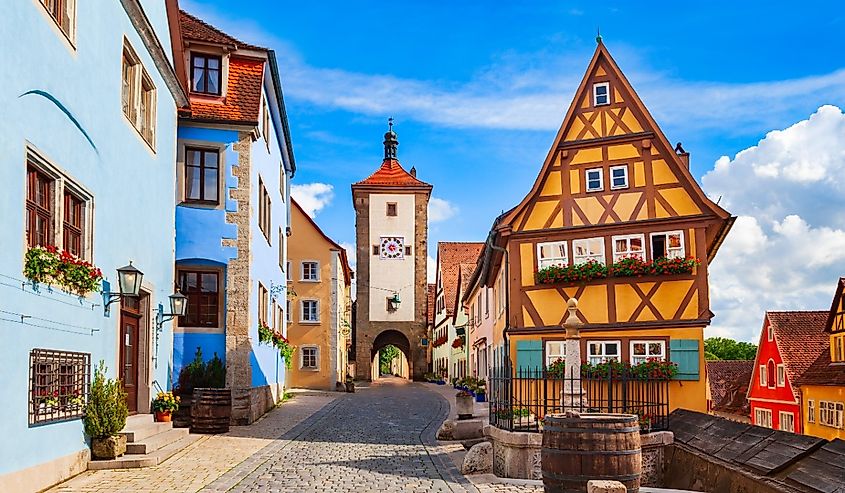
A true holdover from the Middle Ages, Rothenburg ob der Tauber has a mere 11,000 people walking its cobblestone streets, nearly double from its medieval population status of 6,000 a few centuries ago. Today, while Rothenburg ob der Tauber is known for its celebration of medieval life and tourism, it also happens to be a great place to live.
Since the town is steeped in its long history, places like the Medieval Crime Museum showcase the macabre and fascinating facets of regular medieval life, including various forms of torture, interactive displays, and much more. For those wishing for a more artistic experience of pure expression, however, the town is also home to a prime piece of art on display at Saint Jakob's Church near the heart of the town. A complete Gothic cathedral, the altarpiece is half a century old, depicts a scene from the Bible, and was masterfully crafted by Germany's finest woodworker, Tilman Riemenschneider.
In addition to its niche and culturally rich atmosphere, the town has easy access to a nearby medical facility, ANregiomed clinic Rothenburg ob der Tauber.
Gengenbach
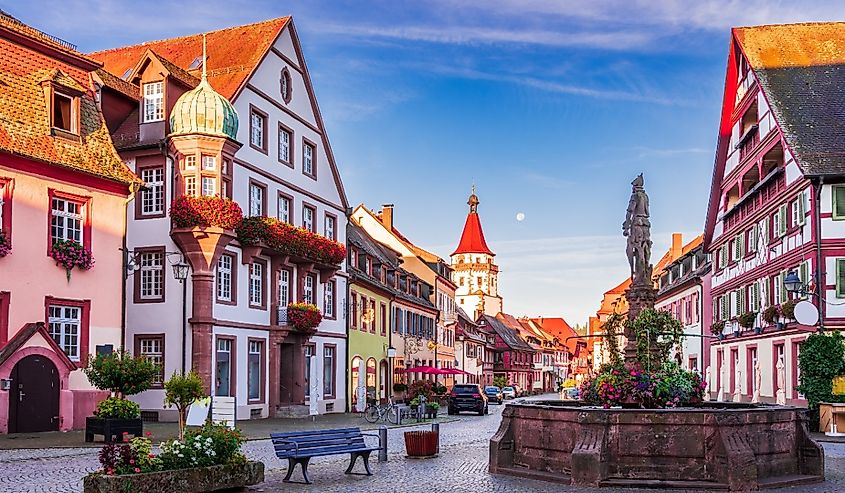
A small town nestled between large, lush valleys, Gengenbach looks much closer to a rural community than that of its other medieval brethren. With a population barely breaking into the 11,000 mark, the town is less of a tourist area—but don't be fooled, there are plenty of things to be enjoyed here, some of which are wholly unique. Historische Altstadt, for instance, is the famous town center, caped and lined with small shops that go back generations, museums, offices, eateries, and all the necessities of a refreshing and relaxed living.
A more mature, and perhaps in line with German culture, the well-known distillery is around the corner. Family-run and operated, the Brennerei & Weingut Wild is surrounded by vineyards and the greenery of the Black Forest Mountain range. Indeed, with all available in this tiny haven, rent prices are in a moderate range of around 2,000 euros and above (according to rentberry.com).
Bad Wimpfen
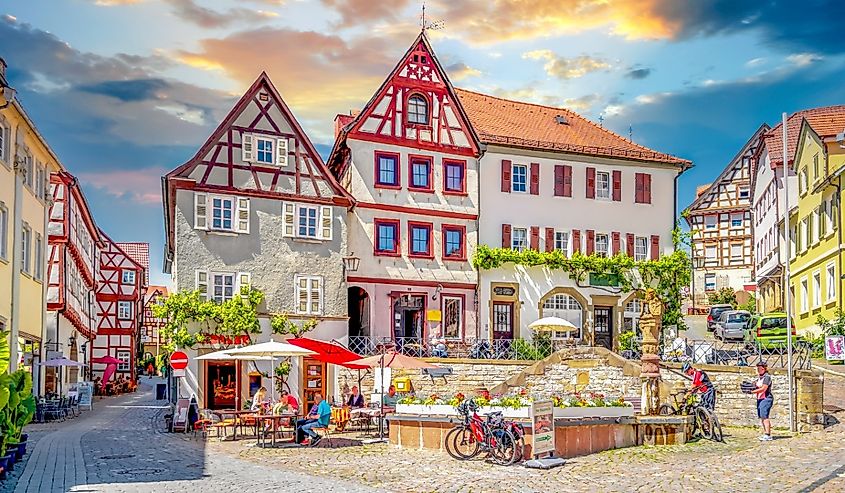
Barely breaking 7,000 residents, this once historic resort town ("bad" meaning bath in German) is surrounded by tall grasses and meadows watered by the long and flowing river of Neckar. Home to the majestic Wimpfen Imperial Palace, a must-see site with available guided tours by costumed and experienced locals, there is no doubt that Bad Wimpfen is considered a beautiful and historic town resting by the water—one that, while having tourists, is admittedly less known to them.
Imperial palace aside, Blauer Turm, the town center, is the beating heart of Bad Wimpfen that is filled with luxurious gastropubs (such as Weinstube Feyerabend), other eateries, museums, antiques, and a myriad of other historic buildings and key points of interest. In Bad Wimpfen, all worth visiting is within walking distance from Blauer Turm, and keeping this in mind with the nearby medical center, Ärztezentrum, the town's soft and welcoming atmosphere is best rooted in its promotion of a luxurious lifestyle.
Dinkelsbühl
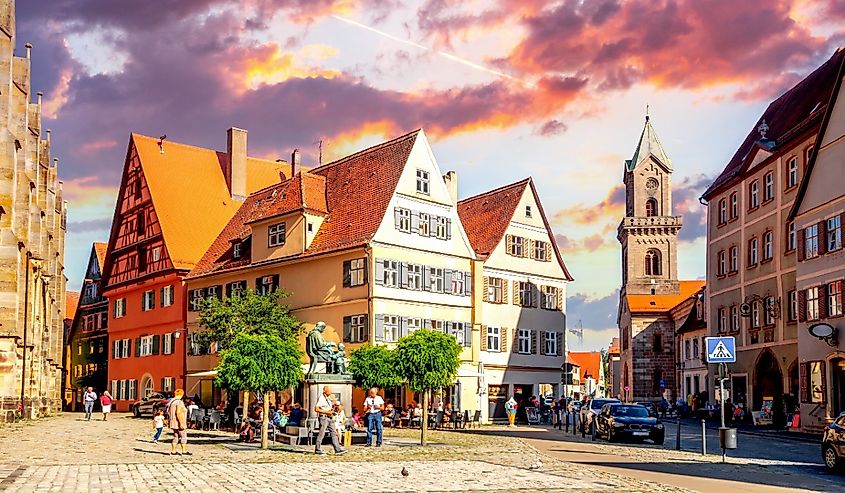
Dinkelsbühl, the main town of really a connection of three others—including Alstadt, Grillenbuck, and Schelbuck. Though so close to one another, they are each distinct but seem to mingle and coalesce right in the middle of Dinkelsbühl. By itself, the population is roughly 13,000 people, and with the sheer amount of things to do and places to see, that number is quite small.
To begin, the beautiful St. George Chruch, a 15th-century work of art in its own right, celebrates the saint who slew a conniving and extorting dragon—and now the church—more a time capsule—has become a hotspot for the religious and non-religious alike. Though there are no more dragons to be slain, the makings of a medieval moat can still be found at Bäuerlinsturm, a 16th-century tower that has since become the icon of the town, along the running Wörnitz River (which offers tours and is visitable).
But Dinkelsbühl's appeal lies in the fact that one can actually buy properties there, despite the high cost. Realestate.com places the properties at around 1 million euros or so, but these properties have the classic architecture one might expect to find in a borderline ancient German town; the difference is in the modern interior homes. Pair this with a top-notch hospital in town (ANregiomed Klinik Dinkelsbühl), and the town becomes yet another historic and luxury pick for the soon-to-be retiree.
Germany is by no means in short supply of special towns that each have their own strengths and weaknesses. Every town has something that draws seniors—whether their relative location, they border the Alps or are in the central flatlands, or whether they celebrate a medieval past or focus more on an artistic and musical kind of history—all of these are truly the cream of the crop. And while some may attract the crowds every now and then, what is better than a tourist getting to appreciate the gold of the land not just one day, week, or month, but every day? What, then, is a pricetag to something irreplaceable? Head out to discover the most welcoming communities in Germany.




